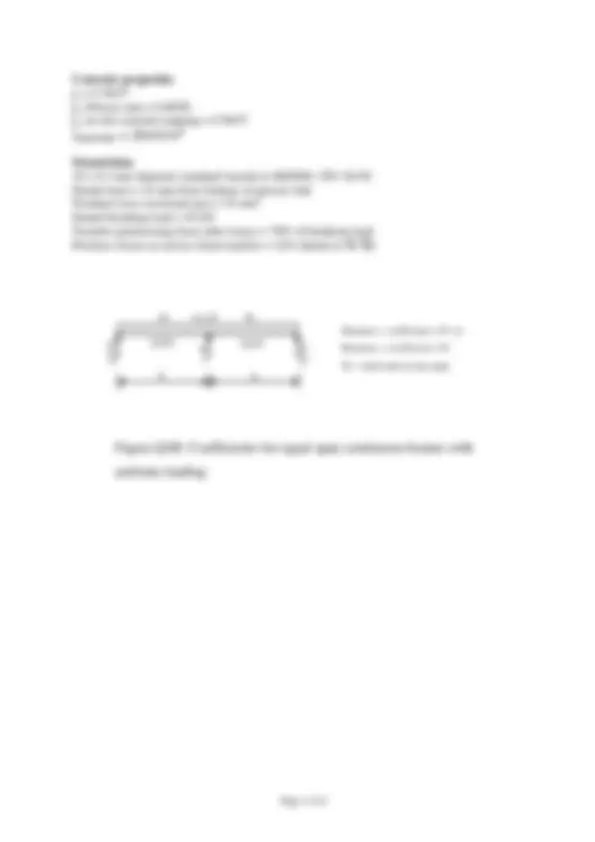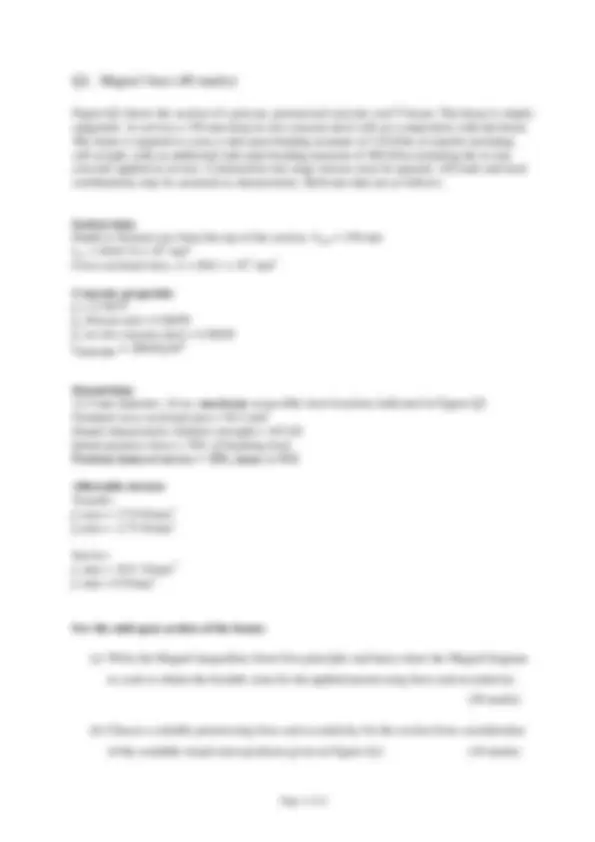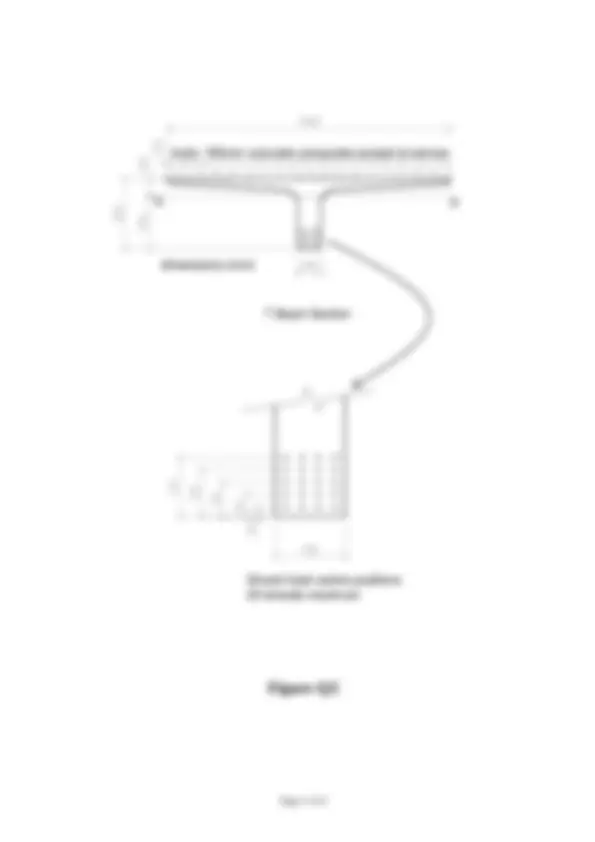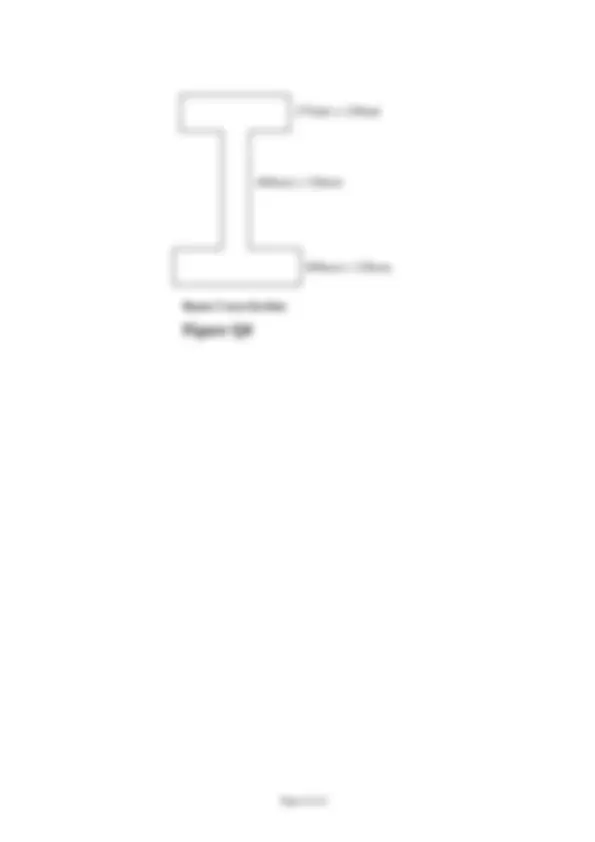






Study with the several resources on Docsity

Earn points by helping other students or get them with a premium plan


Prepare for your exams
Study with the several resources on Docsity

Earn points to download
Earn points by helping other students or get them with a premium plan
Community
Ask the community for help and clear up your study doubts
Discover the best universities in your country according to Docsity users
Free resources
Download our free guides on studying techniques, anxiety management strategies, and thesis advice from Docsity tutors
Main points of this past exam are: Building Occupancy, Stress Limitations, Precast Unit, Composite Slab Section, Combination of Actions, Compressive Stress Limit, Tensile Stresses, Design Coefficients, Concrete Properties, Uniform Loading
Typology: Exams
1 / 8

This page cannot be seen from the preview
Don't miss anything!





Semester 1 Examinations 2012/
Module Code: CIVL
School: Building and Civil Engineering
Programme Title: Bachelor of Engineering (Honours) in Structural Engineering
Programme Code: CSTRU_8_Y
External Examiner(s): Dr Roger P. West, Mr Jack O’Leary
Internal Examiner(s): Mr Brian D. O’Rourke
Duration: 2 hours
Sitting: Winter 2012/
Requirements for this examination: Mathematics Tables.
Students may use their Extracts to the Structural Eurocodes, and the Approved Design Aids
booklet.
Note to Candidates: Please check the Programme Title and the Module Title to ensure that you have received the correct examination paper. If in doubt please contact an Invigilator.
A section of a precast and prestressed concrete 60 mm thick solid plate floor unit with a composite 140 mm in-situ concrete topping screed is shown in Figure Q1A. The precast unit and composite slab are to span simply supported. The over-all depth of the composite slab is 200 mm. In addition to its self-weight, the imposed design load (variable action) on the slab is 3.0 kN/m^2. The building occupancy is residential use. The precast unit is prestressed with 10 no. 9.3mm diameter steel strands over that width.
From consideration of mid-span top and bottom fibre stresses at service for the characteristic combination of actions, determine the maximum simply supported span for the composite slab when:
(a) No site propping is allowed.
(b) A single row of temporary site props are allowed at mid-span under the precast units to support the loading due to the composite topping and workmanship. Design coefficients for prop reactions and moments may be obtained from Figure Q1B. The variable action due to workmanship may be taken as1.5 kN/m^2.
A compressive stress limit of 15 MPa is permitted. No tensile stresses are permitted.
Design Data:
Precast unit Design width = 1200 mm IN.A. precast unit = 21.6 x 10^6 mm^4 Depth to neutral axis from top of Precast unit = 30 mm Cross-sectional area, A = 72000 mm^2
Continued over
140 mm in-situ screed
60 mm precast slab
1200 mm
Strand inset 25mm
Figure Q2 shows the section of a precast, prestressed concrete roof T-beam. The beam is simply supported. At service a 150 mm deep in-situ concrete deck will act compositely with the beam. The beam is required to carry a mid-span bending moment of 110 kNm at transfer including self-weight, with an additional mid-span bending moment of 300 kNm including the in-situ concrete applied at service. Construction site stage stresses may be ignored. All loads and load combinations may be assumed as characteristic. Relevant data are as follows:
Section data Depth to Neutral axis from the top of the section, Ytop = 150 mm Ixx = 8424.74 x 10^6 mm^4 Cross-sectional area, A = 284.1 x 10^3 mm^2
Concrete properties f ci = C30/ f ck Precast unit = C40/ f ck in-situ concrete deck = C40/ 2 ⁄^3
Strand data 12.5 mm diameter, 16 no. maximum at possible inset locations indicated in Figure Q Nominal cross-sectional area = 94.2 mm^2 Strand characteristic (failure) strength = 165 kN Initial prestress force = 70% of breaking load Prestress losses at service = 20%, hence α =0.
Allowable stresses Transfer f o max = 17.0 N/mm^2 f o min = -2.75 N/mm^2
Service f s max = 18.0 N/mm^2 f s min = 0 N/mm^2
For the mid-span section of the beam:
(a) Write the Magnel inequalities from first principles and hence draw the Magnel diagram to scale to obtain the feasible zone for the applied prestressing force and eccentricity. (30 marks)
(b) Choose a suitable prestressing force and eccentricity for the section from consideration of the available strand inset positions given in Figure Q.2 (10 marks)
Strand inset centre positions 20 strands maximum
T Beam Section
dimensions (mm)
Insitu 150mm concrete composite screed at service
Figure Q4 shows the cross section of simply supported inverted prestressed concrete beam that is required to span 12 metres. The service mid-span maximum bending moment is 425 kNm in addition to self-weight, which is the only loading acting at transfer. From consideration of limiting stresses at the extreme top and bottom fibres:
(a) Derive from first principles inequalities that can be usefully used to check if the section is acceptable for bending stress about its major axis for any level of prestress force. (12 marks)
(b) Check that the cross-section in Figure Q4 satisfies these inequalities. (8 marks)
Transfer limiting stresses f o max = 17.5 N/mm^2 f o min = -1 N/mm^2
Service limiting stresses f s max = 16.5 N/mm^2 f s min = 0 N/mm^2
Prestress loss factor (effective prestress) at service α = 0. Take the unit weight of concrete = 25 kN/m^3
continued over
375mm x 120mm
400mm x 120mm
400mm x 120mm
Beam Cross-Section